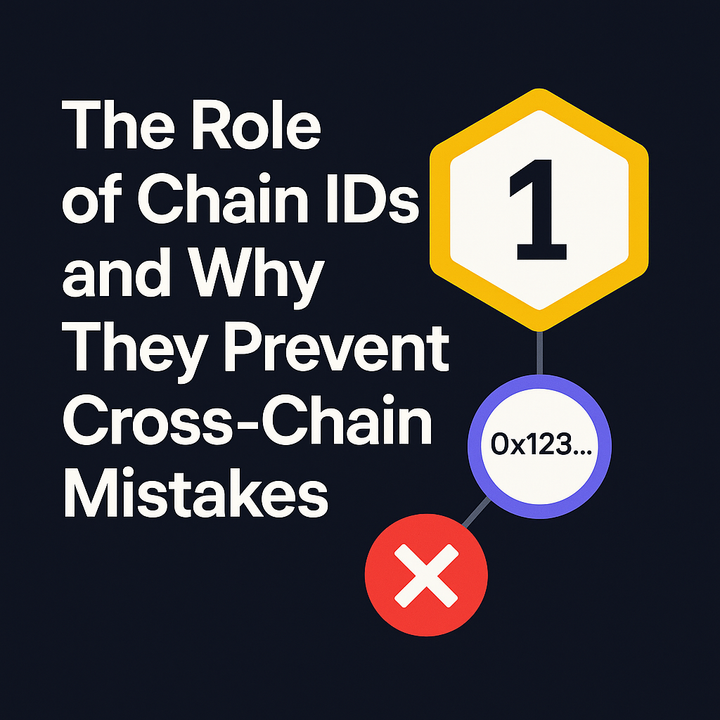The ZKJ Token's Mitotic Collapse: Unpacking Polyhedra's Price Plunge and Market Lessons
The digital currents of finance are rarely calm, but sometimes, a sudden, violent surge can rip through the market, leaving a trail of questions and shattered expectations. What happens when the very promise of innovation, wrapped in the allure of cutting-edge technology, collides with the raw forces of market dynamics and human behavior? The story of the ZKJ token, Polyhedra Network's native asset, is a stark reminder that even in the most advanced corners of Web3, the path to stability is fraught with unseen perils.
The Unraveling of a ZK Promise: A Market in Flux
Polyhedra Network emerged onto the blockchain scene with a compelling vision: to revolutionize Web3 interoperability and scalability through the fastest zero-knowledge proof systems. Its native token, ZKJ, was positioned as the lifeblood of an ecosystem designed for secure, trustless data and asset transfers across disparate blockchains. Yet, in mid-June 2025, this promise met a harsh reality as the ZKJ token experienced a sharp and dramatic price drop, plunging over 90% in a single day. This wasn't merely a market correction; it was a full-scale liquidity crisis, wiping out hundreds of millions in value and sending shockwaves through the crypto community. To understand this sudden unraveling, we can look through the lens of the Mitosis Protocol, a framework designed to address the very fragmentation and inefficiency of liquidity that became so painfully evident in ZKJ's collapse. Just as Mitosis seeks to unify disjointed capital across modular blockchain ecosystems, the ZKJ crash exposed how easily a seemingly robust market can be torn apart by concentrated forces. How can a project built on such advanced cryptographic foundations succumb to such a rapid and devastating decline?
The Genesis of Hype: Building the ZKJ Narrative
The initial buzz around ZKJ was palpable, fueled by Polyhedra Network's ambitious mission to be a foundational layer for the future of Web3 applications. Its core offering,(https://www.bitget.com/academy/what-is-polyhedra-network-zkj-price-drop-explained), promised seamless and private asset transfers across chains like Ethereum and BNB Chain, alongside innovations like ZK-DID (decentralized identity) and ZK-NFTs. This technological prowess, combined with backing from prominent venture capitalists and its listing on major exchanges like OKX, created a significant wave of launch hype. The market's enthusiasm built a perception of a unified and robust liquidity pool, seemingly ready to absorb any shocks. However, this rapid accumulation of interest, while impressive, often masks underlying vulnerabilities. The very speed at which this "unified" market formed meant it lacked the organic depth and resilience that comes from sustained, diverse participation. This initial surge, therefore, masked underlying vulnerabilities, leading us to question the true stability of such rapidly formed market structures.
The Allure of Zero-Knowledge: A Technological Foundation
Polyhedra's technological foundation, centered on(https://www.bitget.com/academy/what-is-polyhedra-network-zkj-price-drop-explained), was designed to enable fast, private, and verifiable transactions across multiple blockchains. The zkBridge protocol, for instance, works by generating cryptographic proofs on the source chain and verifying them on the destination chain, eliminating the need for centralized relayers or trust assumptions. ZKJ tokens were integral to this ecosystem, used for transaction fees, staking, and governance participation, giving the token both utility and influence.The theoretical benefits of zero-knowledge proofs—enhancing privacy, security, and scalability—were compelling. Yet, the market's reaction revealed that even advanced cryptographic solutions are not immune to the dynamics of human behavior and market structure. The promise of a technologically superior system, while a strong draw, could not fully insulate ZKJ from the volatile currents of market speculation and concentrated liquidity.
The Pre-Launch Frenzy: DEX Pumps and Alpha Points
The dramatic crash of ZKJ was not an isolated event but the culmination of several intertwined factors, beginning with a pre-listing price surge on decentralized exchanges (DEXs). This phenomenon, often seen when a token's listing on a major centralized exchange (CEX) like Binance is announced, creates a window where the coin's price can skyrocket on DEXs. Early buyers, anticipating the CEX listing, then dump their tokens for quick profits once trading officially begins, leading to a massive price crash. This structural issue was amplified by Binance's Alpha Points program, which incentivized traders to use the ZKJ/KOGE pair for farming points. This "farming" behavior created a fragile liquidity poolthat was highly susceptible to sudden shifts. This artificial inflation of liquidity, driven by incentives, created a precarious balance, much like a nascent Mitosis pool lacking true organic depth. When the incentives shifted, the structure began to crack, leading directly to the next phase of the collapse.
The Whale's Shadow: Sudden Sell-Offs and Liquidity Pulls
The immediate trigger for ZKJ's dramatic collapse on June 15, 2025, was a series of unexpected and unusually large on-chain transactions. Several wallets initiated massive liquidity withdrawals and sudden sell-offs, effectively "dumping" tokens on the market. One address alone withdrew over $4.3 million in liquidity and sold approximately 1.57 million ZKJ tokens. At least five other wallets followed similar patterns within minutes, severely weakening market depth and triggering sharp price drops in an already fragile liquidity structure. Adding to the pressure, crypto trading firm Wintermute sent over 3.39 million ZKJ to centralized exchanges like Bybit around the time of the crash. This sudden exodus of large capital exposed the inherent fragility, leading to a cascading effect that tore through the market's perceived stability.
Cascading Collapse: The Domino Effect of Liquidation
The initial liquidity pulls rapidly snowballed into a full-scale cascading sell-off, exacerbated by leveraged positions on centralized exchanges. On Bybit, for instance, over $94 million in long positions were closed in just two hours, with multiple trades over $1 million liquidated around the peak of the crash. These forced sales accelerated the price decline. The problem was compounded by the low liquidity in related pools, such as KOGE/USDT, which caused selling pressure to spill over into the more liquid ZKJ/USDT pool, deepening the crash. Polyhedra attempted to stabilize the situation by adding $30 million in liquidity, but much of this was converted into ZKJ as the price continued to fall. This rapid unraveling revealed not just the vulnerability of ZKJ, but broader systemic issues within the crypto market, particularly concerning tokenomics and investor behavior. The event underscored how a single point of failure can rapidly fragment an entire system, a problem the Mitosis Protocol aims to prevent by creating more resilient, interconnected liquidity.
The Tokenomics Unveiled: Vesting Schedules and Unlock Fears
Adding another layer of complexity to the ZKJ crash were the underlying tokenomics and the anticipation of future supply. Polyhedra Network's token allocation includes significant portions for ecosystem incentives, token purchasers, foundation reserves, community airdrops, and core contributors. While vesting schedules are designed to prevent immediate dumps by gradually releasing tokens over time, they can also create periods of heightened anxiety. The crash occurred just days before a scheduled unlock of 15.53 million ZKJ tokens on June 19, adding to fears of further selling pressure. The top 10 wallets holding nearly 69% of the supply further fueled speculation about coordinated exits. The anticipation of future supply, combined with the recent market shock, painted a stark picture for investors, forcing them to re-evaluate their strategies in the volatile ZK landscape. This highlights the delicate balance projects must strike between incentivizing early adoption and ensuring long-term market stability.
Takeaways for Investors: Navigating the ZK Landscape
The sharp drop of ZKJ offers crucial lessons for investors navigating the volatile crypto market, particularly concerning short-term ZK projects. Firstly, overpriced listings and pre-listing price surges on DEXs are significant red flags; FOMO (Fear Of Missing Out) into new listings often leads to losses as early buyers dump tokens. Secondly, the incident underscores the risks of shallow liquidity and concentrated holdings, where large sell-offs can trigger cascading liquidations. Investors must look beyond the hype and conduct thorough due diligence, examining a project's fundamentals, roadmap, and the transparency of its team. The inherent volatility of crypto assets, coupled with potential operator centralization and implementation errors, means that even technologically advanced projects carry significant risks. These lessons extend beyond ZKJ, prompting a broader reflection on the inherent risks and opportunities within the rapidly evolving crypto market.
The Mitosis Solution: Rebuilding Trust and Liquidity
The ZKJ crash vividly illustrates the very problems the Mitosis Protocol aims to solve. Mitosis is an Ecosystem-Owned Liquidity (EOL) Layer 1 blockchain designed to enhance liquidity management and capital efficiency in the decentralized finance (DeFi) ecosystem. It proposes a new, [capital-efficient paradigm] in [cross-chain interoperability], directly addressing the fragmentation and inefficiency of liquidity that contributed to ZKJ's downfall. By creating a unified liquidity layer, Mitosis seeks to prevent the kind of isolated liquidity attacks and cascading failures seen with ZKJ. It aims to provide a more robust and resilient framework for capital flow across modular blockchain ecosystems, ensuring that liquidity is not easily manipulated or drained. The need for such unifying protocols becomes even more apparent when considering the broader implications of market fragmentation and the increasing entanglement of crypto with traditional finance.
The Broader Implications: Market Maturity and Systemic Risk
Events like the ZKJ crash, while painful for investors, contribute to the crypto market's ongoing maturation. They serve as stark reminders of the inherent [vulnerability of crypto-assets to price manipulation] and the potential for significant financial losses. As crypto markets continue to expand and integrate with the broader financial system, the likelihood of [crypto's volatility triggering broader economic fallout] increases, potentially affecting long-term savings and retirement systems. This underscores the critical need for robust safeguards and clear regulatory frameworks. The European Parliament, for instance, has already raised questions about market manipulation in crypto, citing [MiCA regulation], which aims to protect investors from fraud and market abuse. This ongoing scrutiny and the market's reactions to such events are pushing the ecosystem towards greater transparency and resilience.
The Path Forward: Innovation, Integration, and Vigilance
The journey of digital finance is a complex interplay of technological innovation, market dynamics, and regulatory evolution. The ZKJ incident highlights the tension between rapid growth fueled by hype and the fundamental need for stability and security. The increasing institutional adoption of stablecoins, exemplified by Circle's NYSE debut, signals a move towards greater integration with traditional finance, which could bring much-needed stability and regulatory clarity.However, this integration also means that the risks within the crypto market can have broader systemic implications. The future of crypto will be defined by how effectively the industry can leverage advanced protocols like Mitosis to unify fragmented liquidity, implement robust safeguards, and foster a transparent environment that builds trust. This demands continuous monitoring of emerging trends and adaptive regulatory responses to safeguard investors and ensure market integrity.
Conclusion: The Unfolding Narrative of Digital Finance
The sharp drop of the ZKJ token is more than just a cautionary tale for investors; it is a vivid illustration of the ongoing "mitotic" process within the digital financial landscape. This process, akin to the Mitosis Protocol's work in unifying fragmented liquidity, involves constant growth, division, and adaptation. While the initial hype and rapid ascent of ZKJ showcased the immense potential of zero-knowledge technology, its subsequent collapse exposed the vulnerabilities inherent in nascent market structures and the powerful, often unseen, forces of liquidity dynamics. The lessons learned from such events are invaluable, pushing the crypto ecosystem towards greater maturity, transparency, and resilience. As digital assets continue their inevitable integration into the global financial system, the collective effort to build secure, efficient, and trustworthy infrastructure—guided by the principles of protocols like Mitosis—will be paramount. The narrative of digital finance is still unfolding, and each challenge, like the ZKJ drop, serves as a catalyst for necessary evolution, shaping a more robust and integrated future.
Refer To:
🔗Links:



Comments ()